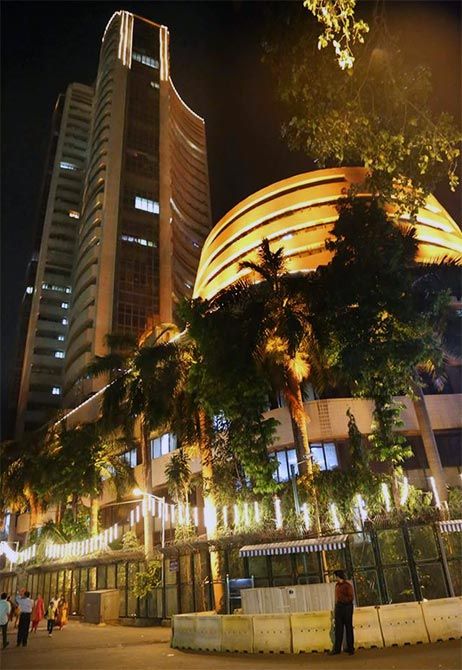 Continuing with last year's winning spree, the stocks of small and medium companies on the Bombay Stock Exchange have outperformed their large-cap peers so far this year.
Continuing with last year's winning spree, the stocks of small and medium companies on the Bombay Stock Exchange have outperformed their large-cap peers so far this year.
While the BSE small-cap index has gained 7.71 per cent to 11,942.03 so far this year, the mid-cap index has clocked a rise of 7.27 per cent to 11,127.42.
In comparison, the 30-stock Sensex - consisting of large-caps - has risen 5.61 per cent to 29,044.44. The BSE bellwether index touched all-time high of 30,024.74 on March 4 this year.
The small-cap index scaled its 52-week high of 12,002.18 on Monday, while the mid-cap index had hit its record peak on March 4 at 11,180.70.
"The valuations of some of the mid-cap and small-cap scrips are attractive which is drawing investor interest in these stocks. Besides, healthy retail investor participation is also helping smaller scrips," said Alex Matthews, Geojit BNP, Research Head.
In a bear market, said marketmen, investors tend to invest in large-cap stocks, while they prefer to book profits in smaller stocks.
Although retail investors been lukewarm towards the primary market, they have been participating in the secondary market, analysts said.
Smaller stocks are generally being bought by local investors, while overseas investors focus on blue-chip scrips, they added.
Stock markets did extremely well in 2014 due to impressive foreign fund inflow, formation of a new majority government at the Centre and economic reforms.
In 2014, the Sensex reaped a gain of almost 30 per cent, while the small-cap index fetched a much higher return of over 69 per cent and the mid-cap index recorded a steep rise of 55 per cent.
The mid-cap index tracks companies with a market value that is on an average one-fifth of blue-chips or large firms. Small-cap firms are almost a tenth of that.
Meanwhile, the total foreign fund inflows in the Indian capital markets have crossed the Rs 81,000 crore (Rs 810 billion) mark since the beginning of the year.






 © 2025 Rediff.com -
© 2025 Rediff.com -